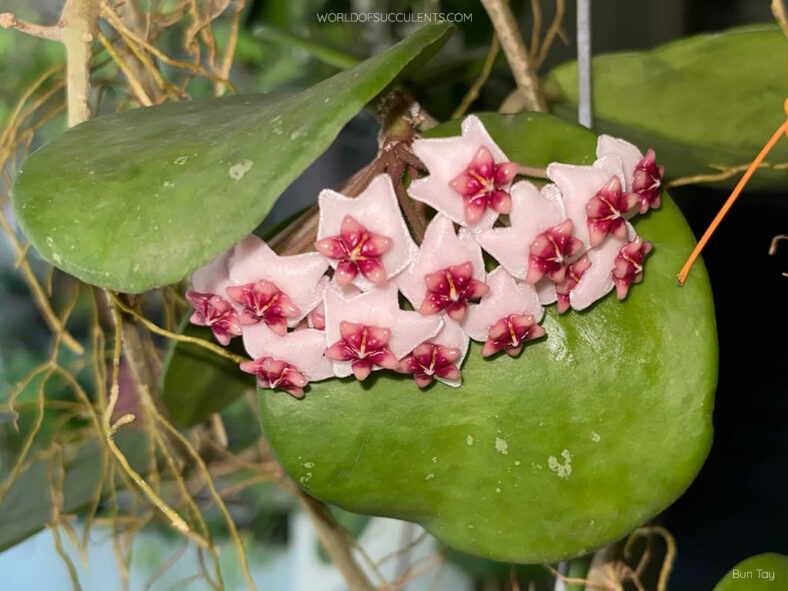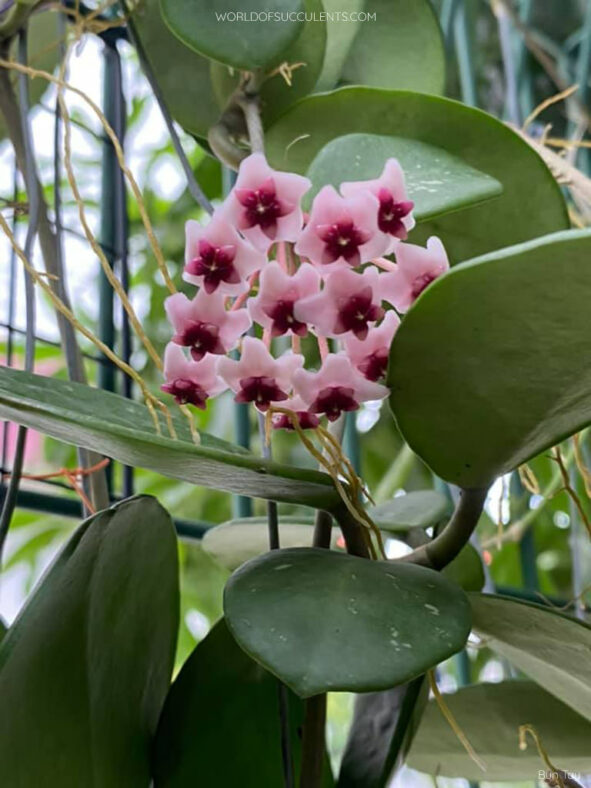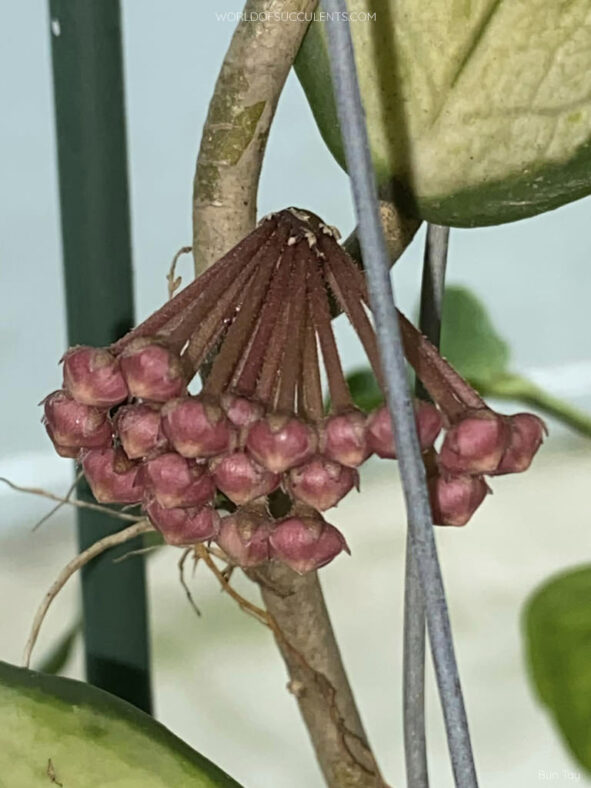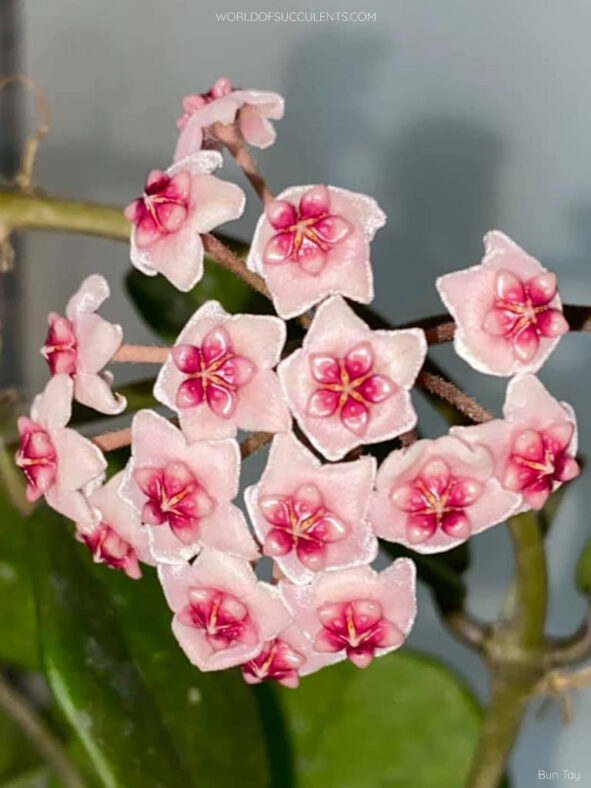Hoya obovata is a plant that is fast-growing and easy to grow. It has glossy leaves and beautiful blossoms.
Scientific Name
Hoya obovata Decne.
Scientific Classification
Family: Apocynaceae
Subfamily: Asclepiadoideae
Tribe: Marsdenieae
Genus: Hoya
Etymology
The specific epithet "obovata (ob-oh-VAY-tuh)" means "egg-shaped; obovate" and refers to the shape of the leaves.
Origin
Hoya obovata is native to Indonesia (Maluku, Sulawesi), Thailand, and Vietnam.
Description
Hoya obovata is a climbing plant with slender stems that bear glossy, dark green leaves with silver flecks and no visible veins. The leaves are thick, leathery, and obovate, measuring up to 4 inches (10 cm) long, and are almost equal in width.
During spring and summer, Hoya obovata produces clusters of fragrant flowers that last up to 14 days. It blooms when it is around 2 to 3 years old. The flowers have a reflexed, pale pink, densely hairy corolla and a darker pink corona. They can reach up to 0.6 inches (1.5 cm) across.

How to Grow and Care for Hoya obovata
Light: Even if this plant can tolerate lower light levels, it may become weak and leggy if the light is too low, producing fewer leaves and flowers. Therefore, keeping it indoors in bright, indirect sunlight is best.
Soil: Well-draining soil that provides excellent aeration and does not hold too much water is most important for growing a healthy plant.
Temperature: Hoya obovata thrives in hot and humid climates, so keep it away from drafty windows and doorways during the colder months. It grows best in USDA Plant Hardiness Zones 11a to 11b, with average minimum winter temperatures ranging from 40 to 50 °F (4.4 to 10 °C).
Watering: As this plant is sensitive to overwatering, soak the soil thoroughly during the spring and summer, but allow it to dry out before watering again. Otherwise, you will increase the risk of root rot, and your plant will not be happy. It is relatively dormant during the fall and winter and needs only moderate watering.
Fertilizing: While Hoya obovata is not a particularly heavy feeder, it can benefit from high-potassium fertilizer at half strength every two weeks during the growing season.
Repotting: As an epiphyte, this plant has shallow root systems and does need a deep container. It also does not require frequent repotting. It prefers to be slightly rootbound, so repot it in spring only if it outgrows its container.
Propagation: Although layering is the easiest way to propagate Hoya obovata, using stem cuttings is the most popular method. Using leaf cuttings can be more challenging, while starting it from seeds is the simplest but the most time-consuming method. For best results, take cuttings only when the plant is actively growing and sow the seeds in spring and summer.
Learn more at How to Grow and Care for Hoya.
Toxicity of Hoya obovata
Hoya obovata is considered non-toxic, so having it around kids and pets is safe.
Links
- Back to genus Hoya
- Succupedia: Browse succulents by Scientific Name, Common Name, Genus, Family, USDA Hardiness Zone, Origin, or cacti by Genus
Photo Gallery
Click on a photo to see a larger version.


